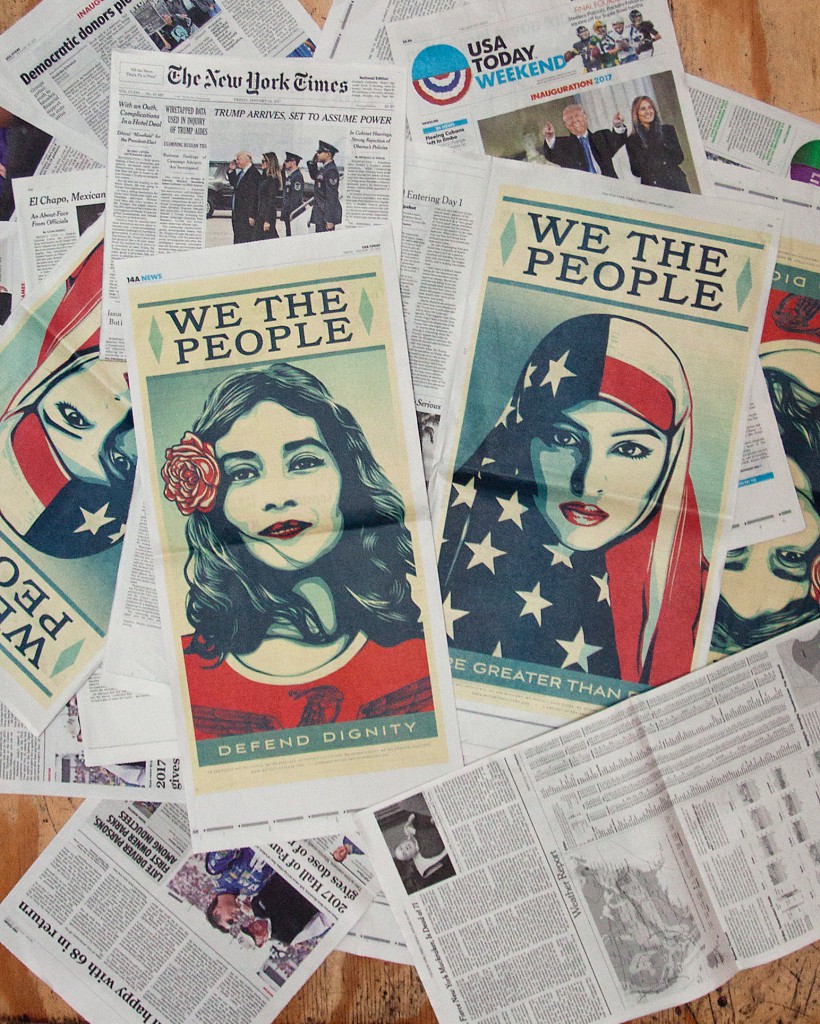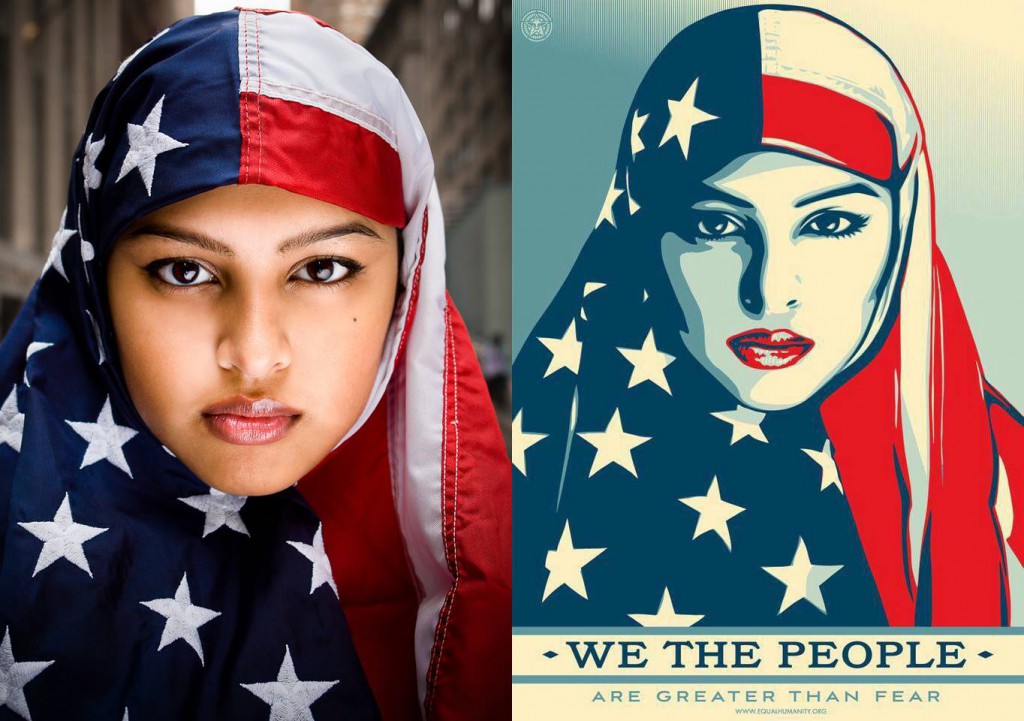
Today newspapers across America sharing stories about Inauguration Day also carried prints from the “We The People” public art campaign. The prints feature direct, uplifting messages such as “Defend dignity” and “We are greater than fear” with bold, stylized portraits of a Muslim woman, a Latina, an African American boy, a Native American woman and two women embracing.
The campaign is a collaboration between nonprofit coalition The Amplifier Foundation and three artists — Shepard Fairey created the set of three red, white and blue prints, Jessica Sabogal the “We the Indivisible” print, and Ernesto Yerena the “We the Resilient” print based on a photo by Ayşe Gürsöz.

The portraits in the “We The People” art campaign are based on shots taken by photographers, illustrating the diversity of American identity while also focusing on historically marginalized groups or those targeted during Trump’s presidential campaign. Fairey, who is known for his Barack Obama “Hope” poster, shared these details in this PBS interview:
The Muslim woman was shot by Ridwan Adhami, who is an accomplished photographer and proud Muslim, the Latina woman was shot by Arlene Mejorado, a San Antonio- based artist and photographer and proud first-generation American, and the African-American kid was shot by Delphine Diallo, a French and Senegalese photographer based in New York.
NYC photographer Ridwan Adhami, born in Queens to Syrian immigrant parents, shot the symbolic image of a woman wearing an American flag as a hijab, for the six-year anniversary of 9/11 at the World Trade Center site. Ten years later, with Islamophobia on the rise, with Muslim Americans and those perceived to be Muslim stereotyped as terrorists, plus an increase in the number of hate crimes following November 2016’s elections, the image continues to serve as a powerful reminder of shared American identity.
Adhami shared the image side-by-side with the related “We The People” print in a public post on Facebook, along with his story of how he went about creating the image with fellow New Yorker Munira. Read an excerpt below.

I created the photograph on the left almost TEN YEARS ago for the 6 Year Anniversary of 9/11 as a response to the rhetoric of that time against Muslims and the claims that we weren’t American enough.
I wanted to make a power statement. I wanted to create something that we as a community could be proud of. I wasn’t apologizing for anything, I wasn’t asking to be accepted, I was merely stating that I too was an American. Wholly and completely and nothing anybody would say could take that away.
The flag is a symbol and a clear and instantly noticeable representation of America. Hijab, the Arabic word for head cover, is also a clear and instantly recognizable symbol for Islam. What better symbols to use.
To take it up a notch I wanted to shoot the photo at the World Trade Center site, near Wall Street in the financial district in Manhattan, NYC. That point has long been lost and can barely be seen in the background of the image. But it was important to be there, doing it there in itself was a statement. I remember getting all types of weird looks and a few sly comments while shooting, “What are they doing?” or “You can’t use a flag like that.” I was a New Yorker, the subject Munira was a New Yorker, we are both Muslim, the city was ours, the nation was ours, the religion was ours. There was no separating all those facts as many tried and still try to do.
Read the rest of Adhami’s post here. The “We The People” prints and more artwork created for Saturday’s Women’s March are being made available for free download online and being distributed in D.C. and other cities, following a successful Kickstarter campaign that made over $1.36 million in eight days.
Update: A few days after this post went up, The Guardian identified the woman in Adhami’s photograph as Munira Ahmed, a Bangladeshi American from Queens, NYC. Read the interview for her thoughts on composing the photo, Fairey’s use of it for his portrait, and her experiences at the January 21 Women’s March in D.C.
* * *
Pavani Yalamanchili is an editor at The Aerogram. Find her on Twitter at @_pavani, and follow The Aerogram at @theaerogram or on Facebook.












